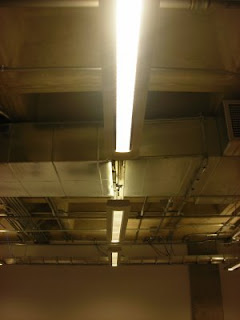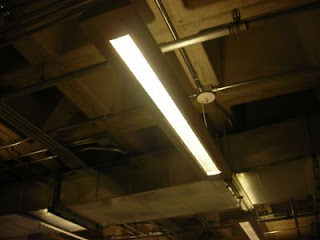Find installations of the six types of lamps mentioned in the book. For each installation respond to the items listed below:
a. Identify the purpose of the space.
b. Identify the purpose of lighting, including an identification of ambient, task, accent, and sparkle lighting.
c. Identify the lamp/s
d. Describe the luminaire
e. Describe the effect of each light source in each space.
f. Describe the effect of each light source on materials.
g. Evaluate the appropriateness of the illumination levels.
h. Based upon your observations and reflections, provide recommendations for improving the lighting environment.
FILAMENT LIGHTING
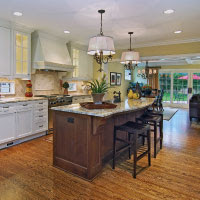
a) The space shown above is a kitchen space where people will be gathering to prepare, cook, and eat food.
b) The lighting is task lighting over the island in the kitchen where the filament lighting fixtures are placed, This lighting is helping to illuminate the space where prep and eating will take place.
c) The filament lamps are located over the island in the center of the kitchen
d)
e) Since the light fixtures are above the island only, they only effect that small space in the kitchen. They do not provide enough light to illuminate the entire space, but they do their job of providing light over the space they were designed to illuminate.
f) The light fixtures above the space shine down directly onto the countertop. I'm not sure of what material it is. It appears that the light shining down creates some glare and shows reflections of other objects in the space. The color of the material keeps it from being too bright and disabling the viewers sight.
g) From what I can tell from the photograph the illumination level appears to be adequate for the purpose of the space. It is not too bright, which would cause great amounts of glare, but it is also not dim which would cause the inhabitant to strain to see.
h) I believe the lighting fixtures and exposure of light are suitable for the environment. The photograph portrays the space to have adequate amounts of lighting to perform any task at hand. Although there is some glare off the countertops this does not interfere with the viewing of the space or the purpose of the space.
COLD CATHODE
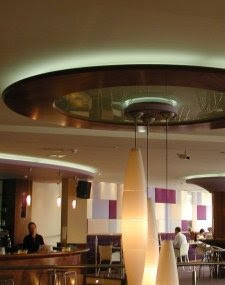
a) This space is a restaurant/bar area.
b) The lights are used as a type of accent lighting to illuminate where that particular seating area is.
c)The lights are located at the top and appear to be cove lighting
d)
e) These lights do not have an effect on the table space but, the light up the space as a whole. The add light to the ceiling which reflects down. It adds a nice touch to the vertical elements in the space
f) The light source only hits the ceiling which is not a reflective material so it does not produce glare. It just directs the light down.
g) The illumination level is bright, which causes it to pop out against the more dim lighting.
h) The illumination level should be dimmed somewhat because it causes the focus to be at the ceiling.
FLUORESCENT
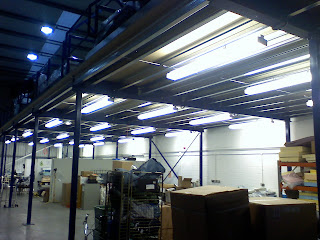
a) This space is a factory and/or storage space where many boxes seem to be stored
b) The lighting is ambient lighting. It is uniformly lighting the space
c) The lamps are located uniformly along the ceiling
d)
e)The light sources make the space very bright.
f) There are not many reflective surfaces in the space so no glare is produced. It does provide reflection on the concrete floor.
g) The illumination levels are reaching the point of being uncomfortably bright.
h) I would dim the lights down some and add color to the walls so everything isn't a bright white anymore.
CERAMIC METAL HALIDE
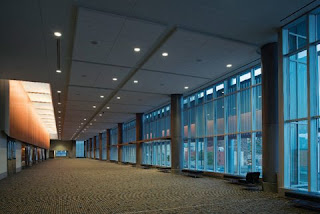
a) The purpose of this space is a wide hallway or a lobby of some sort.
b) The lighting of the ceramic metal halide in this space creates accent lighting along the wall
c) The lamps are located along the wall where the wood is placed. They are in that cove shining down creating a wallwash.
d)
e) The lights are contained in the small space along the wall so they do not illuminate anything in the space other than the wood paneling along the wall. It does brighten up that side of the space along the wall though.
f) The wood paneling material absorbs the light pretty well while still allowing some reflection off of it into the wide lobby area. Although the wall appears bright it is not difficult to look at.
g) I believe the illumination level fits the atmosphere that this space seems to create. It adds a focus to the space. If it was dimmer there would be nowhere to focus.
h) I would extend the paneling further towards the floor and allow for more light to pop off that wall into the space.
LED LIGTHING
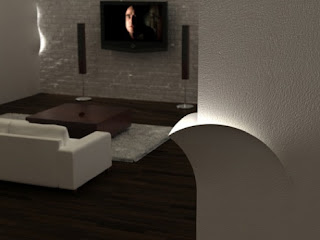
a) This space is a living room or seating area.
b) The lighting from the sconces are accent lighting.
c) The lamps are located along the walls.
d)
e) The lights provide a glimmer of light along the walls to add some extra light to the space they do not add much illumination.
f) The lights reflect some off the wall material but not much.
g) The light levels are bright but they are in a small area so I believe the illumination level is appropriate.
h) I would only add more sconces along the walls.
ELECTRODELESS LIGTHING
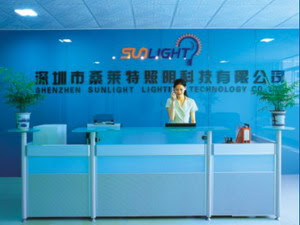
a) This space is a lobby desk area.
b) The purpose of this lighting is ambient lighting.
c) The lamps are located uniformly overhead.
d)
e) The light source produces adequate amounts of light for the space.
f) There are not many reflective materials so glare is not produced. Most of the materials absorb the light.
g) The illumination level appears to be too dim for the space. The light should be brighter.
h) Brighten lights in the space.
 I choose a mixture of browns to create a monochromatic color scheme that makes the space seem very relaxing and comfortable.
I choose a mixture of browns to create a monochromatic color scheme that makes the space seem very relaxing and comfortable. The colors used in this space create a more lively, bright space. These are three colors that appear opposite each other on the color wheel. These colors also make the space feel much larger.
The colors used in this space create a more lively, bright space. These are three colors that appear opposite each other on the color wheel. These colors also make the space feel much larger.






































